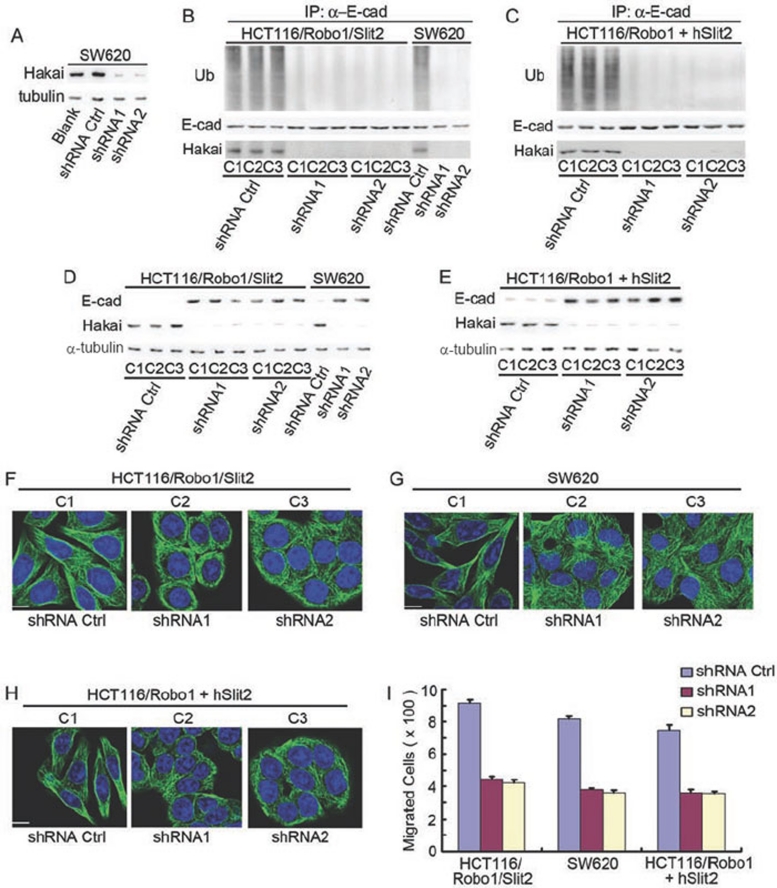Figure 7.
Roles of Hakai in E-cad ubiquitination/degradation and EMT. (A) Identification of Hakai shRNAs. SW620 cells were either not transfected (blank) or transfected with the plasmids of shRNA control and shRNA1 and 2 of Hakai. Transfectants were immunoblotted for Hakai and α-tubulin. (B, C) Effects of Hakai knockdown on E-cad ubiquitination. HCT116/Robo1/Slit2 and SW620 cells (B) or hSlit2-treated HCT116/Robo1 cells (C) were transfected with the plasmids of shRNA control and shRNA1 and 2 of Hakai followed by immunoblotting for ubiquilin (Ub, upper panels), E-cad (middle panels) and Hakai (lower panels). (D, E) Effects of Hakai knockdown on E-cad degradation. HCT116/Robo1/Slit2 and SW620 cells (D) or hSlit2-treated HCT116/Robo1 cells (E) were transfected with the plasmids of shRNA control and shRNA1 and 2 of Hakai followed by immunoblotting for E-cad (upper panels), Hakai (middle panels) and α-tubulin (lower panels). (F-H) Effects of Hakai knockdown on cell morphology. HCT116/Robo1/Slit2 (F), SW620 cells (G) or hSlit2-treated HCT116/Robo1 cells (H) were transfected with the plasmids of shRNA control and shRNA1 and 2 of Hakai followed by immunofluorescent staining as above. (I) Effects of Hakai knockdown on cell migration. HCT116/Robo1/Slit2, SW620 cells or hSlit2-treated HCT116/Robo1 cells were transfected with the plasmids of shRNA control and shRNA1 and 2 of Hakai followed by the Boyden chamber assay for determination of cell migration. Bars, 10 μm. Results are representative of at least three independent experiments (A-H) or the mean±S.D. of three independent experiments (I).

